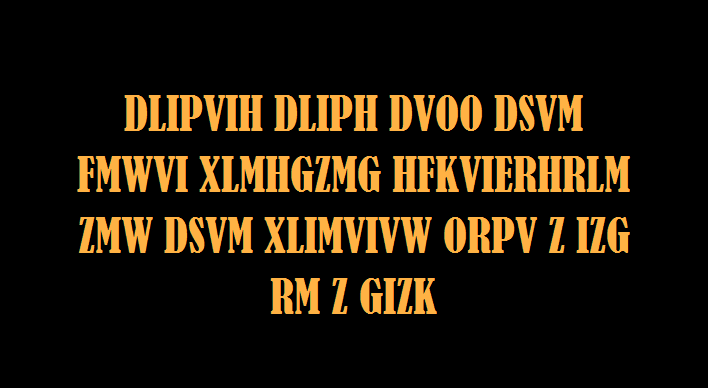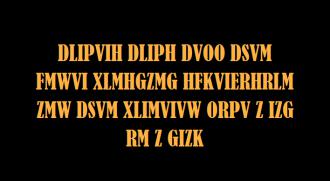Decrypt the message
Can you decrypt hidden message (DLIPVIH DLIPH DVOO DSVM FMWVI XLMHGZMG HFKVIERHRLM ZMW DSVM XLIMVIVW ORPV Z IZG RM Z GIZK)?Correct answers: 21
The first user who solved this task is H Tav.
#brainteasers #wordpuzzles #riddles

Working late
It had taken him several months, but the executive vice president had finally persuaded his new secretary to bend over the back of his leather couch and allow him to have sex with her that way.
"And just where have you been until this hour?" demanded his wife, when the wayward husband finally arrived home.
"Down at the office," he replied, "working like a dog."

